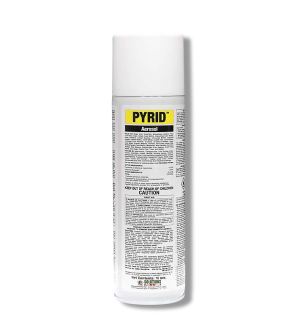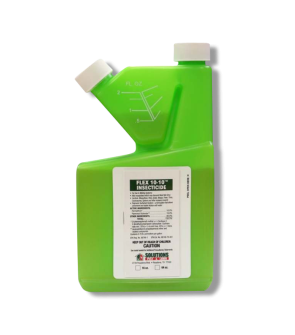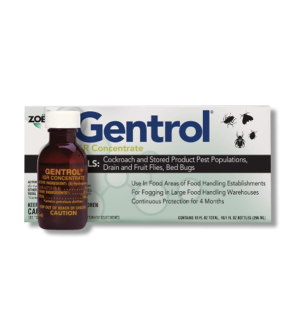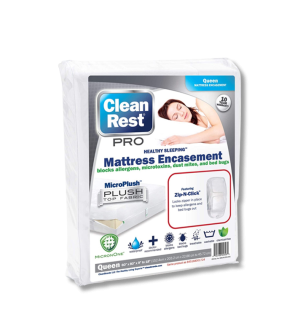Bed Bug Travel Tips
Most Effective Products
Bed Bug Travel Tips
This page is an expert DIY guide on preventing bed bugs from coming home with you during your travels or stays in hotels. By following our products and methods suggested in this guide we can recommend you will be successfully bed bug free during your travels.
The chance of picking up bed bugs when you travel is always something to be concerned about, but as infestations are difficult to remove it is important to take simple precautionary methods. Bed bugs can attach themselves to your clothing, luggage, and even to the laces of your shoes. More often than not, bed bugs find these opportunities when you stay in already infested hotel beds or furniture, including the hotel lobby.
Before leaving for your trip, there are a few things you should do to avoid bringing home an infestation of bed bugs. Our DIY bed bug travel trip guide will help to provide all the expert advice and professional products you will need to prevent bed bug infestations.
What to Bring to Prevent Bed Bugs During Travels
Prior to traveling, you will want to bring a few things besides basic vacationing items such as toiletries and clothing. By bringing these following items, you can help to deter bed bugs from attaching themselves to you and your personal belongings.
- Large zip-lock travel bags and closed-seal storage bags, which are ideal for storing your clean or dirty laundry to prevent bed bugs attaching themselves to the clothing's fibers.
- Disposable plastic bags that can be used over your luggage when left inside your hotel room. You may also use large disposable garbage bags (make sure they are brand new and have not been used in room) to store personal belongings when leaving the hotel.
- LED Flashlight to examine dark crevices and hard-to-reach areas inside your hotel room when you arrive.
How to Stay Safe From Bed Bugs During Travels
Give yourself enough time to check into your hotel room and inspect for bed bugs before permanently checking in. This way you have enough time to check-out from a hotel and check into a new one if there are any signs of bed bugs and their activities.
Pesticide applications cannot be made into commercial or public property such as hotels, air bnbs, motels, and so forth. The best thing you can do is to properly inspect for bed bugs and follow the recommended tips.
Leave Personal Belongings In Vehicle Before Entering Room

One of the first things you should do when arriving at your hotel or vacation rental is to leave your personal belongings in the vehicle. If you are being dropped off then you will want to leave your luggage in the bathtub of your hotel room. Never leave personal belongings on the luggage rack, floor, and bed.
You should never leave luggage on your hotels carpet or floor until is has been properly inspected with a LED flashlight or if the luggage is hard-shelled. Reason being is that bed bugs will be more likely to infest this area and will be able to attach themselves to the fabric fibers of your belongings. We recommend leaving your luggage in the bathtub because bed bugs cannot climb slick surfaces, like porcelain, glass, or smooth plastic. Bed bugs are commonly found in dark crevices where they can hide more easily.
Inspect Hotel or Vacation Room and Furniture

Bed bugs like to hide in hard to reach dark crevices, but will also hide themselves in the rooms carpet, curtains, dresser drawers, inside or behind bedside tables, underneath cushions of upholstered furniture or within the furniture themselves (including bed frames), ceiling fans, pillows, picture frames, underneath or on the corners of mattresses, luggage racks, inside electrical outlets, inside closets, and behind headboards of beds.
Besides seeing the bed bugs themselves, the light emitted from your flashlight will help to reveal their dark reddish or black colored feces. On mattresses and furniture it will appear as dark smears or someone has taken a marker and drawn several spots.
Seal Luggage and Clothing Inside a Ziploc Travel Bag or Closed-Sealed Storage Bag

Bed bugs cannot fly and must crawl across carpet and other fibered materials to reach your belongings or yourself. Keep all personal belongings off the ground and hang luggage, purses, and computer bags from the luggage or closet rack.
Keep in mind that these belongings will still need to be wrapped with a heavy duty garbage bag or closed-sealed storage bag since bed bugs can still infest these items. For all other items such as clothing, you may store inside your drawers as long as they are sealed in closed-sealed storage bags or large zip-lock travel bags.
Of course, bed bugs can still travel along smooth surfaces such as hardwood floors so do not succumb to leaving personal belongings on the ground.
When leaving your hotel, make sure to wrap all luggage's with a new large disposable garbage bag to prevent an bed bug infestation within your vehicle.
Never Unpack on Mattresses or Furniture

Bed bugs will infest all surfaces, cracks and crevices surrounding your bed and furniture. You do not want to unpack your clothes, personal belongings, or suitcases directly onto mattresses or furniture as this is the most easiest way for bed bugs to attach themselves.
When not ingested with blood, bed bugs are hard to see as they measure between 5 to 7 mm in length. Due to their size, bed bugs can easily inhibit your personal belongings without being detected.
To avoid this encounter, you will want to leave all items in their original suitcases or closed-sealed bags.
Do Not Move to a Different Room on Same Floor

If you have confirmed bed bugs and their activity inside your hotel room, you may not be keen on staying. Unfortunately, this short notice can leave you with no choice but to simply change rooms at the same establishment. However, changing rooms does not always mean you are entering a bed bug free environment.
In most bed bug infestation scenarios, they can quickly infest an area within a short time period. They do this by traveling from person to person or through the shared ventilation pipes or walls spaces that connect each hotel rooms.
For safety and avoidance of bed bugs, it is best to stay at least two floors apart from the room you are leaving.
How to Prevent Bed Bugs After Traveling
Bed bugs are a serious and fast-acting infestation that can be avoided by immediately implementing the following steps. For best preventative measures, read our bed bug control article to further learn more preventative and inspections measures.
Before applying any pesticide products, you should wear the appropriate personal protective equipment (PPE) that will protect your face, mouth, eyes, hands, feet, and skin.
Immediately Wash All Personal Belongings and Leave Suitcases Outside of Home

When the trip ends, do not immediately rush all your belongings and suitcases into your home. It may be hard to believe that despite your best practices you could still harbor a bed bug, but it is possible.
For best preventative measures, clean every piece of clothing whether dirty or not. Transfer the clothing from your luggage into a disposable plastic bag and then immediately place into your washing machine. This will help to prevent any bed bugs from falling off your clothes or belongings into your clean home. You will also want to leave all clothes outside until the washing machine is ready to take them.
For objects you cannot wash such as your suitcase or other belongings, you will want to vacuum and steam on high heat to quickly eliminate potential bed bugs and their eggs.
You will also want to wash all cracks and crevices within your vehicle and to vacuum the upholstery of your car seat and floor. You will also need to vacuum your mattress, curtains, suitcases, bedding, floor, cloth materials, and furniture to secure your home from bed bugs.
Dispose of Vacuum Contents Outside of Home

It is understandable that after traveling, you want to perform the bare minimum to quickly relax within your home. However, it is crucial to dispose of your vacuums contents in an outdoor trashcan after sanitizing and vacuuming your homes furniture, curtains, inside and outside of your suitcase, and other fabric materials.
Leaving the contents within your vacuum could allow for bed bug eggs to hatch inside the appliance or any remaining bed bugs to escape back into your home.
For further preventative measures, it would not hurt to go outside of your home to sanitize the inside of your vacuum to dispose of remaining bed bugs or eggs.
What To Do If Bed Bugs Were Brought Home?
Apply Flex 10-10 and Gentrol IGR
After treating your home with Pyrid Insecticide Aerosol, you will want to apply an insecticide with long-residual activity. Our recommendation is Flex 10-10, which is a synthetic pyrethroid that provides a quick knockdown of bed bugs in the inside and outside of your home. For indoor treatments of furniture, bed frames, and carpeting you may use an additional product such as Gentrol IGR.
Gentrol IGR is an insect growth regulator that will control the egg and nymph stage of bed bugs. Once these undeveloped stages come into contact with the product they will be unable to develop and reach adulthood, helping to cease bed bug reproduction. Mixing both Flex 10-10 and Gentrol IGR together will help to eliminate all stages of the bed bugs life cycle.
You will want to perform a spot treatment indoors with a hand pump sprayer for easier control during applications. Before mixing Gentrol IGR, you will want to first treat your mattress with only Flex 10-10. This must be followed as Gentrol IGR cannot be applied to your mattress, but may be used in combination with Flex 10-10 on the bed frame, box spring, cracks and crevices of furniture, closets, carpet, flooring and along the baseboards of the room. A standard application of Flex 10-10 is 3.2 fl. oz. of product per gallon of water per 1,000 sq. ft. For severe bed bug infestations, you may use 6.4 fl. oz. of product per gallon per 1,000 sq. ft. After treating your mattress with Flex 10-10, you may then apply at a rate of 1 fl. oz. of Gentrol IGR per 1,500 sq. ft. of surface area.
Protect Your Home's Mattress and Furniture
Due to high potential of hiding places for bed bugs, it does not hurt to treat your mattress at home with an Pyrid Insecticide Aerosol.
Apply Pyrid Insecticide Aerosol in short bursts from a distance between 18 to 24 inches, making sure to not exceed 10 seconds of spray per room. Additionally, you will also need to cover the mattress with clean bedding and a mattress encasement before you go to bed.
As easily as bed bugs can infest mattresses they can infest furniture as well. Continuing with Pyrid Insecticide Aerosol applications, you will perform a crack and crevice treatment to all folds, tufts, seams, edges, underneath furniture and cushions. You will also want to treat all cracks and crevices within your home such as pantry shelving, drawers, underneath appliances and furniture. However, Pyrid Insecticide Aerosol cannot directly be applied to flat surfaces where human contact may be occurred.
Once your bedding has been treated with Pyrid Insecticide Aerosol and cleaned you can use a mattress and pillow encasement. Our go-to-product to use on mattresses is Clean Rest Pro Mattress Encasement and Clean Rest Pro Pillow Encasement. Both of these products are designed to fight against bed bugs or dust mites with their micro plush fabric and zipper seal. For more comfortable nights, they are both made to be soft to the touch and prevent crackling or crunch noises as you move about in your sleep.
Key Takeaways
What is the First Thing to Do For Bed Bugs in Hotels?
- Leave all personal belongings and suitcases within your vehicle, hotel bathtub, or hanging from suitcase or closet rack while covered with an large disposable garbage bag. This will prevent bed bugs from infesting your belongings while you inspect the room for these blood-sucking pests.
What Should be Done if Bed Bugs are Present within Hotels?
- You will want to immediately vacate the premises to avoid bringing bed bugs home with you during your travel. If you find that you cannot check-out or find another place to stay then you will want to inhibit a hotel room that is two floor levels apart from your previous room. Always inform your hotel manager of the current bed bug infestation so they can properly handle the infestation.
How to Protect Your Home from Bed Bugs After Traveling
- We recommend leaving all personal belongings outside your home until they have been properly washed or cleaned. For items that cannot be immediately washed you will want to leave in airtight plastic bags to prevent the exterior of your home from being infested. For further preventative measures, you will want to apply an indoor and outdoor treatment of Flex 10-10.
















































































































































































































































































































































































































































































































































